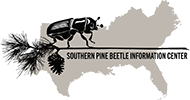Abstract
Myotis septentrionalis (Northern Long-eared Bat) is a federally threatened insectivorous bat facing devastating population declines due to white-nose syndrome (WNS). Our study provides pre-WNS (2009) capture rates and roosting-behavior data for Northern
Long-eared Bats in the southern Appalachians. We conducted mist-net surveys at 37 sites and radio-tracked female Northern Long-eared Bats to their day roosts in eastern Tennessee and western North Carolina. We compared tree and plot characteristics for roosts and corresponding random trees using Wilcoxon rank-sum tests. Our 43 survey nights yielded 302 bats of 11 species; Northern Long-eared Bats were the most commonly captured species (n = 97). We located 14 unique roosts for 7 radio-tracked bats; Pinus strobus (White Pine) snags (n = 8) were the most common roost sites. We observed a colony of 72 bats using a White Pine snag as a maternity roost. Roost trees were significantly larger in diameter and had more solar exposure above the roost and within the plot than random trees. Our data show the high abundance of Northern Long-eared Bats pre-WNS, highlight the use of White Pine roosts in an area impacted by a Dendroctonus frontalis (Southern Pine Beetle) outbreak, and support previous determinations of roost-selection flexibility by Northern Long-eared Bats across their range..
To read the full article please visit the link below:
Rojas, Vanessa G., Joy M. O’Keefe, and Susan C. Loeb. 2017. “Baseline Capture Rates and Roosting Habits of Myotis Septentrionalis (Northern Long-Eared Bat) Prior to White-Nose Syndrome Detection in the Southern Appalachians.” Southeastern Naturalist 16 (2): 140–48.
